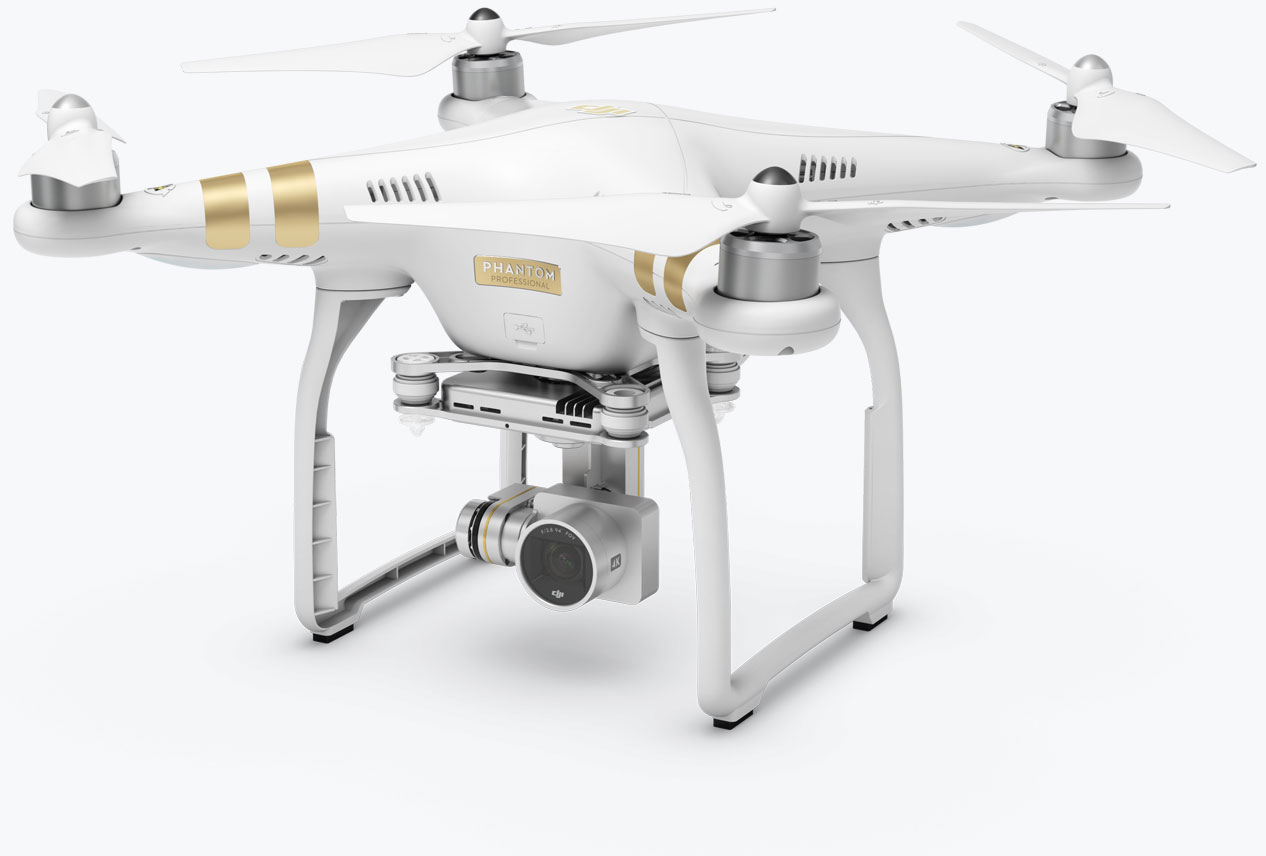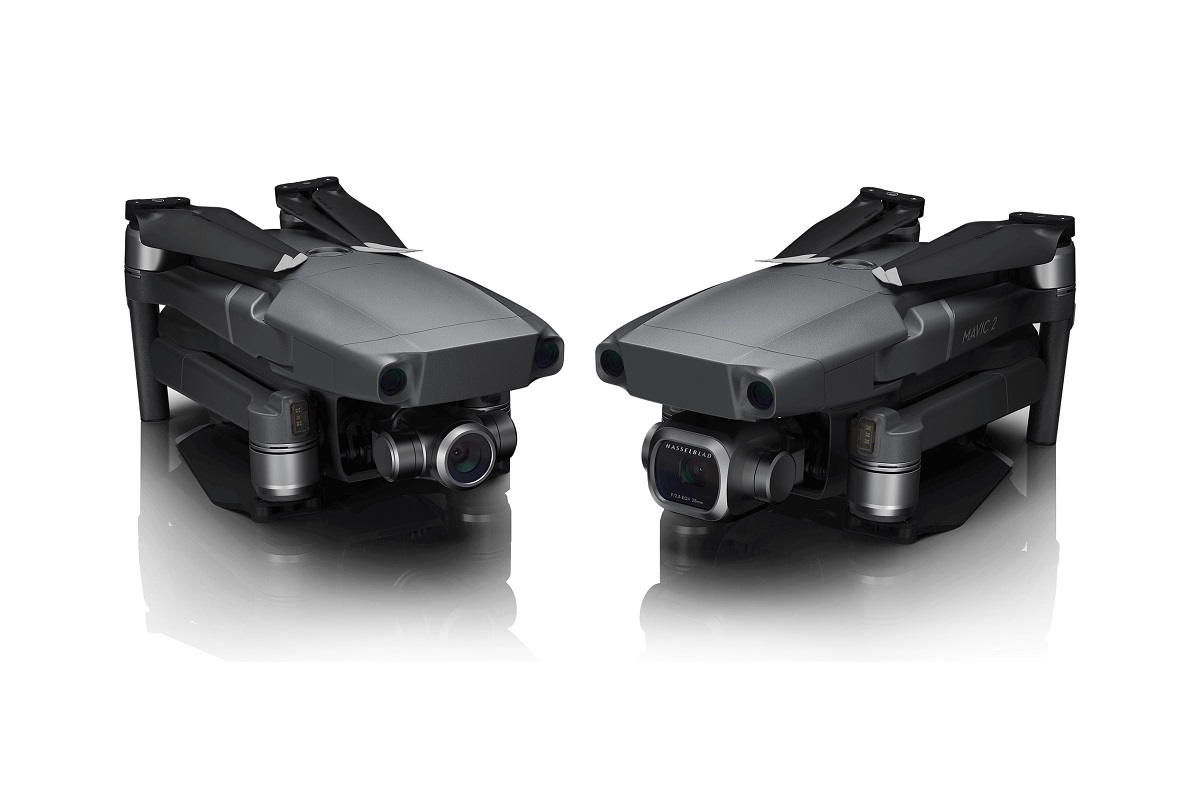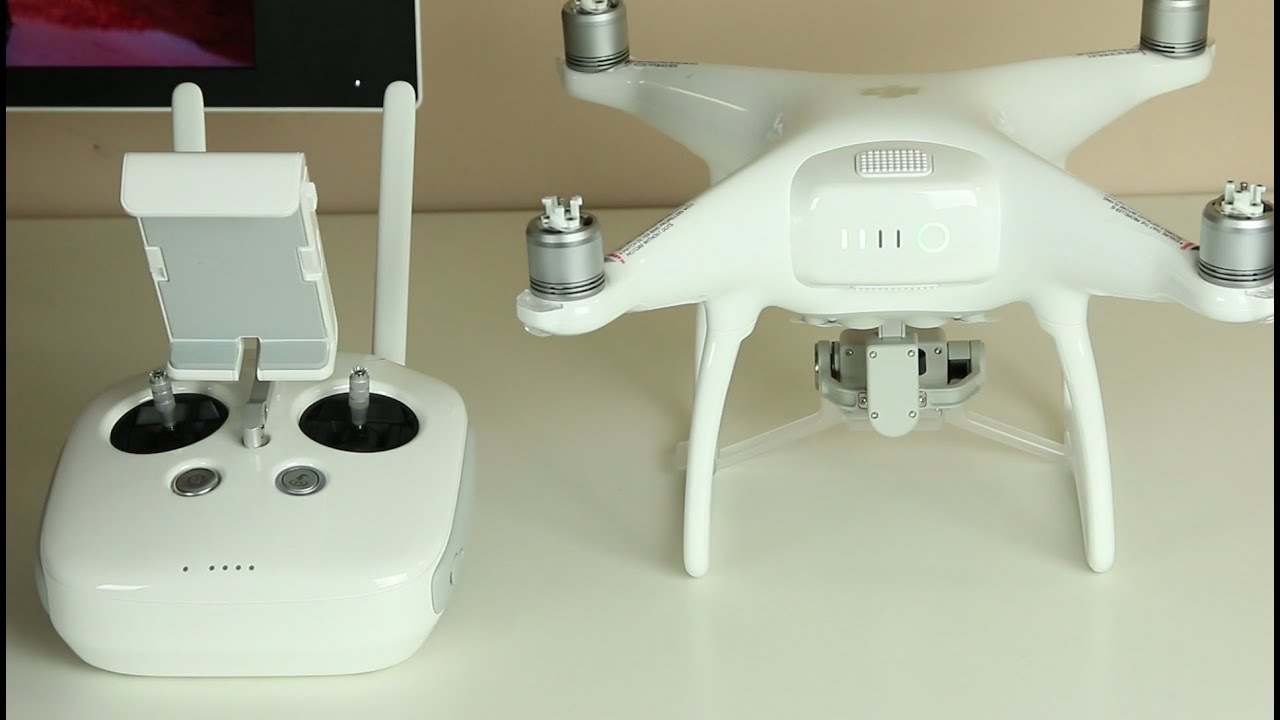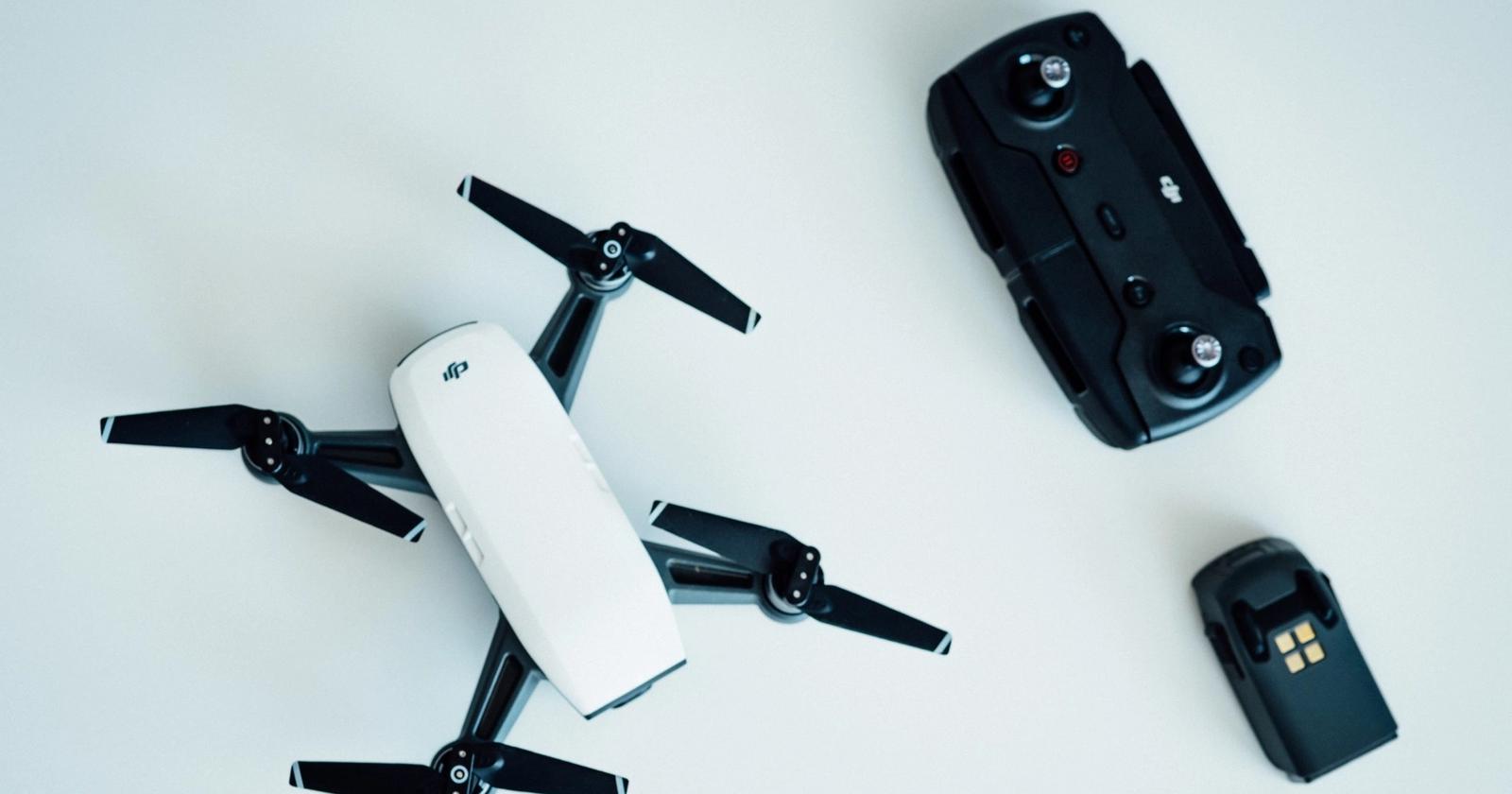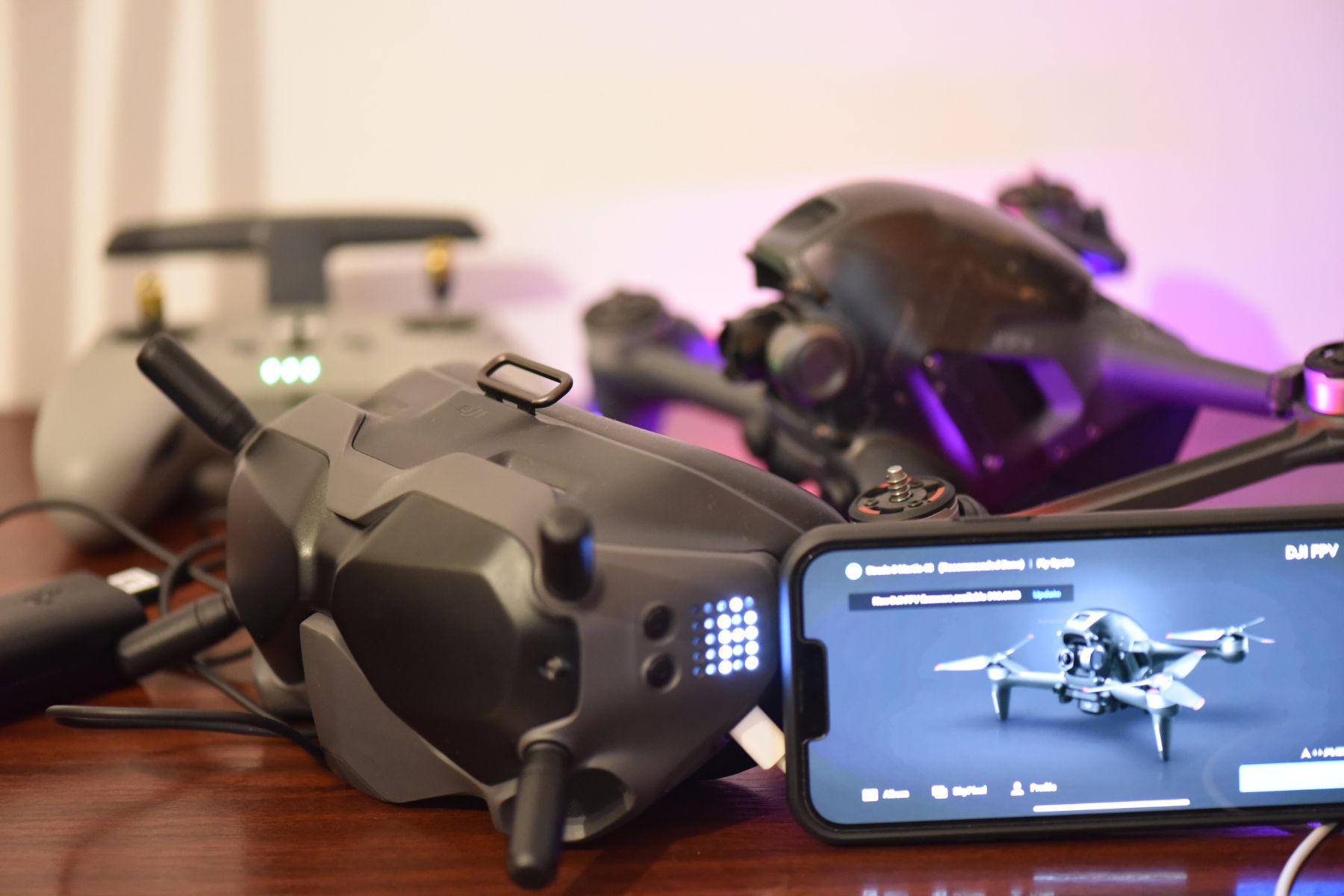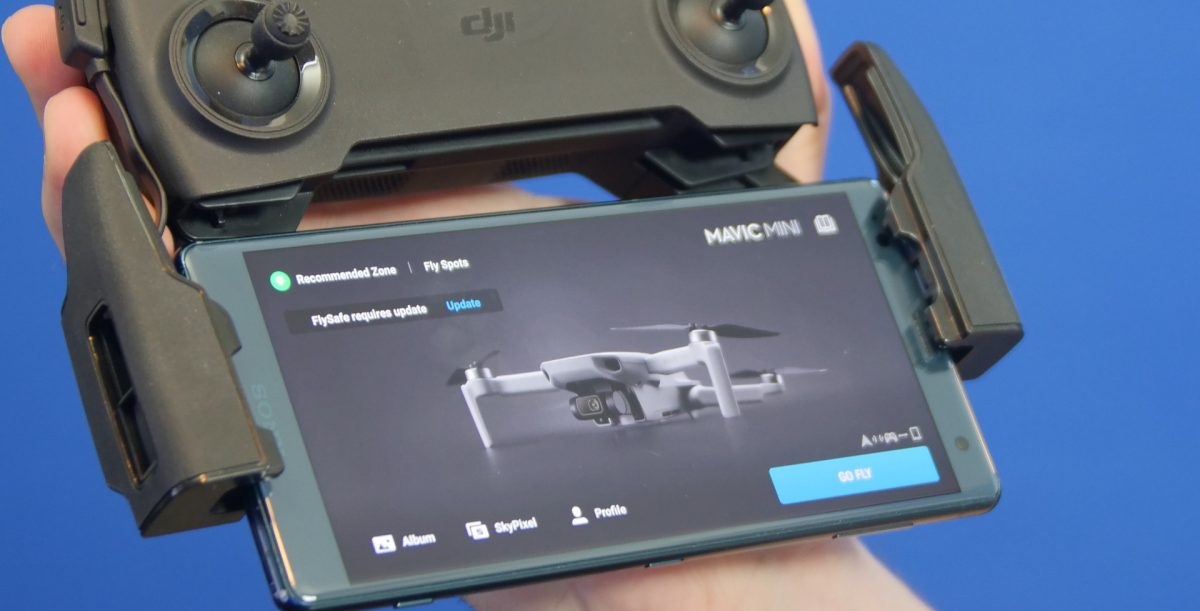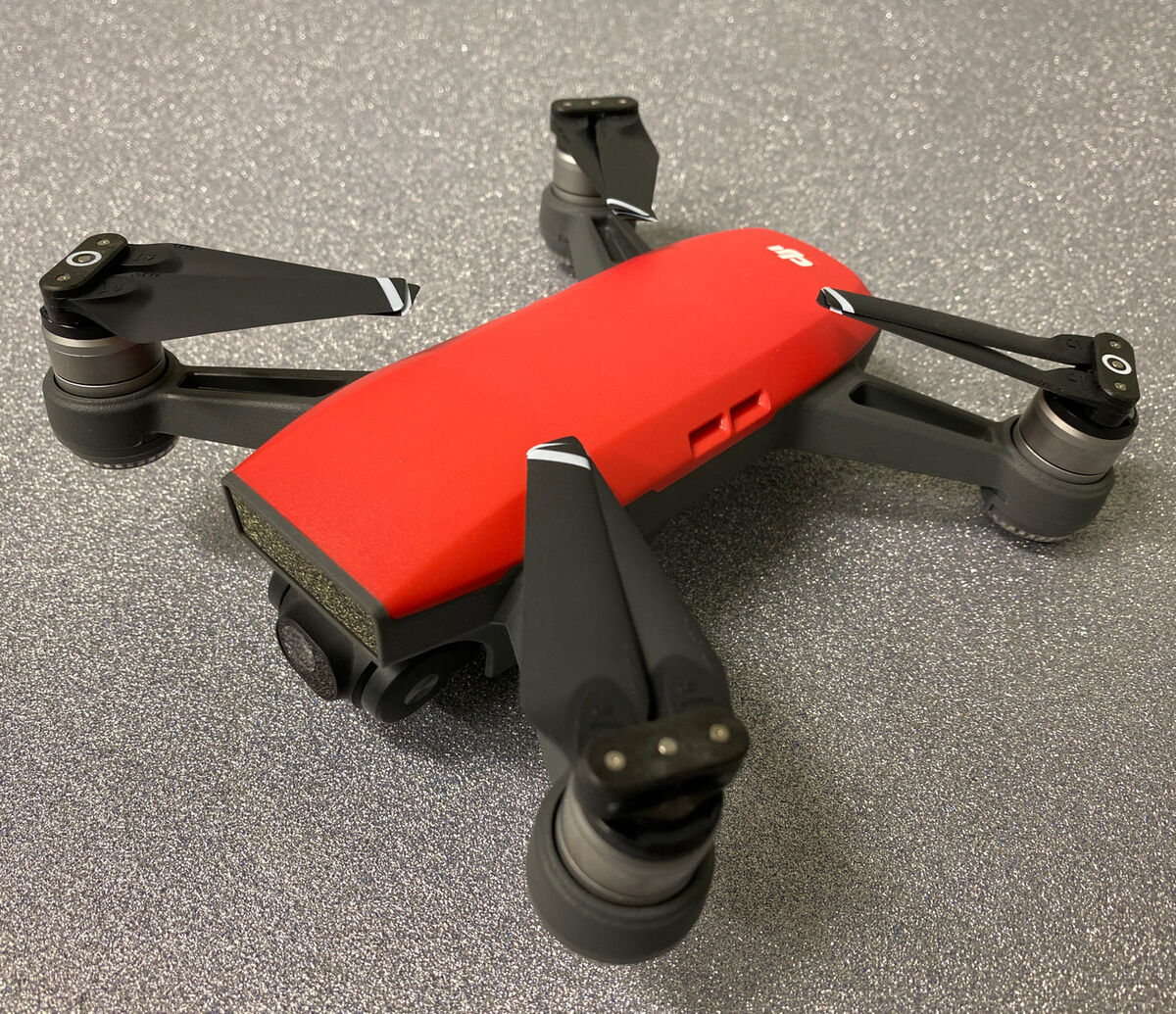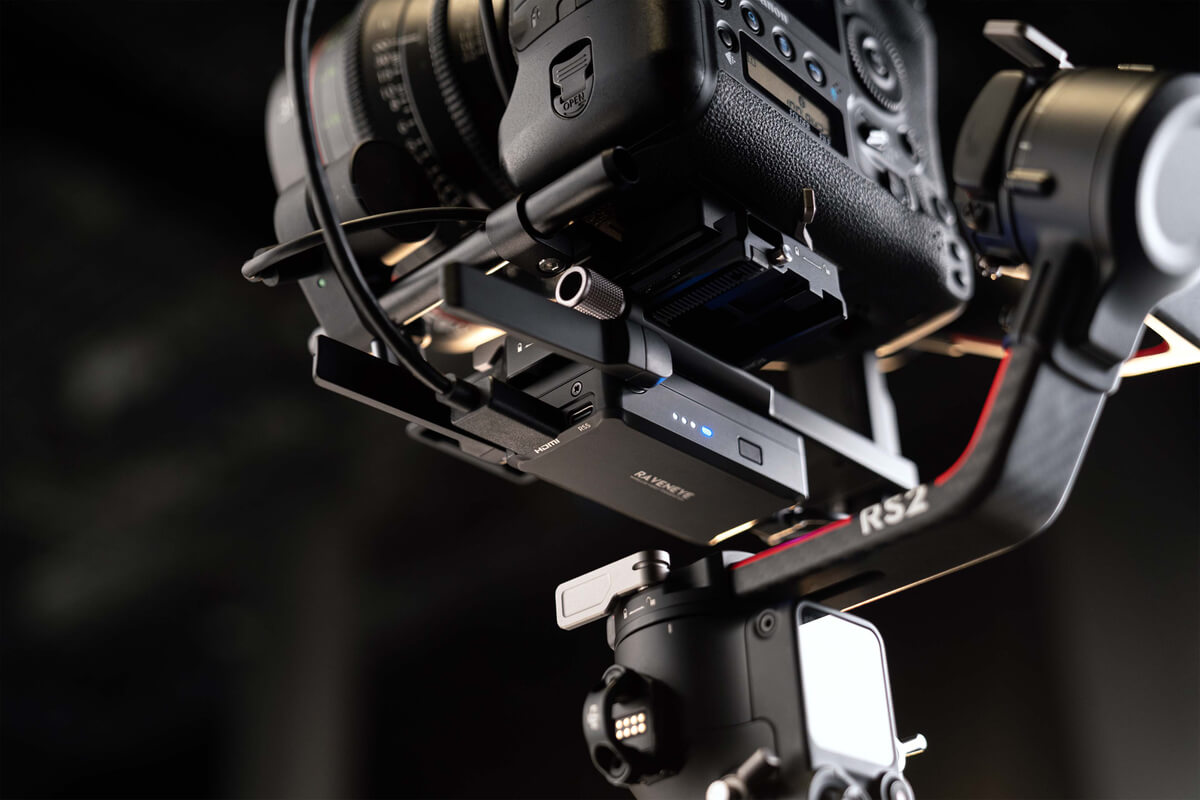Introduction
Drones have become incredibly popular in recent years, serving a wide range of purposes from capturing stunning aerial photography to assisting in search and rescue operations. Among the top drone manufacturers in the world, DJI stands out as a leader, renowned for producing high-quality and innovative drones.
Headquartered in Shenzhen, China, DJI was founded in 2006 by Frank Wang. Starting as a small company, it has since grown into a global powerhouse in the drone industry. With a commitment to excellence and cutting-edge technology, DJI has repeatedly pushed the boundaries of what drones can do.
So, what sets DJI drones apart? In this article, we will explore the features, capabilities, and popular models of DJI drones. Whether you are a photography enthusiast, an aerial videographer, or simply interested in the world of drones, this article will give you valuable insights into the world of DJI and how their drones can enhance your aerial experiences.
Before diving into the specifics, it’s important to understand what exactly a DJI drone is. At its core, a DJI drone is an unmanned aerial vehicle (UAV) that is equipped with state-of-the-art technology and advanced flight control systems. These drones are designed to be easy to fly while offering impressive stability, maneuverability, and image quality. Whether you are a beginner or an experienced pilot, there is a DJI drone suitable for your needs.
Throughout the article, we will discuss the various features and capabilities that make DJI drones stand out in the market. Additionally, we will explore some of the most popular DJI models currently available, providing an overview of their specifications, flight performance, and camera capabilities.
Choosing the right DJI drone can seem overwhelming with the plethora of options available. Therefore, we will guide you through the process of selecting the perfect DJI drone for your specific requirements. From budget-friendly options to professional-grade aerial platforms, DJI offers a range of drones tailored for various purposes and budgets.
Finally, we will share some valuable tips and tricks to help you make the most out of your DJI drone flying experience. From flying techniques to post-processing advice, these insights will help you capture breathtaking aerial imagery.
As the drone industry continues to evolve, DJI remains at the forefront of innovation. We will also discuss the future trends and advancements we can expect from DJI drones, painting a picture of what lies ahead for drone enthusiasts and professionals alike.
So fasten your seatbelt and join us on this exciting journey into the world of DJI drones!
History of DJI
The story of DJI began in 2006 when founder Frank Wang, a young entrepreneur and drone enthusiast, started the company in his dorm room at Hong Kong University of Science and Technology. With a vision to revolutionize the way we capture and view the world from above, Wang assembled a team of talented engineers who shared his passion for unmanned aerial vehicles (UAVs).
In its early years, DJI focused on developing flight controllers and stabilization systems for existing drones. Their breakthrough came in 2010 with the release of the first DJI Phantom, a ready-to-fly quadcopter that captured the attention of both hobbyists and professionals. This marked the beginning of DJI’s ascent to become the industry leader in consumer and professional drones.
As demand for their products grew rapidly, DJI expanded its operations and opened new offices in the United States, Germany, Japan, and South Korea. They continued to innovate and introduce new features that set their drones apart from the competition. In 2013, DJI released the Phantom 2 Vision, the world’s first consumer drone with an integrated camera. This groundbreaking feature propelled DJI to new heights and solidified their position as a pioneer in aerial photography and videography.
Over the years, DJI gained recognition for its commitment to quality and innovation. Their dedication to pushing the boundaries of drone technology was evident in 2015 when they introduced the DJI Inspire 1. This advanced drone featured a retractable landing gear and a 4K camera that could be independently controlled by a second operator, revolutionizing the way professionals captured aerial footage.
In 2016, DJI continued to disrupt the market with the release of the DJI Phantom 4. This drone included groundbreaking features such as obstacle detection and autonomous flight modes, making it easier than ever for beginners to fly and capture stunning aerial imagery.
Today, DJI is not only known for its consumer drones but also for its professional-grade aerial platforms. The DJI Matrice series is a popular choice among industry professionals, offering advanced flight capabilities and the ability to mount various cameras and sensors for specialized applications like surveying, inspection, and mapping.
With a customer-centric approach, DJI has established itself as a global brand, trusted by enthusiasts, professionals, and even government agencies. Their dedication to providing exceptional products, coupled with a robust ecosystem of accessories and software, has solidified DJI’s position at the forefront of the drone industry.
Looking ahead, DJI shows no signs of slowing down. Their research and development teams continue to push the boundaries of drone technology, exploring new frontiers such as artificial intelligence, augmented reality, and beyond line-of-sight operations. The future of DJI is poised to bring us even more innovative and exciting drone capabilities that will reshape industries and unlock new possibilities in aerial exploration.
What is a DJI Drone?
A DJI drone, also known as an unmanned aerial vehicle (UAV), is a remotely controlled aircraft that utilizes advanced technology and flight control systems to achieve stable and precise flight. DJI drones are renowned for their exceptional performance, user-friendly interfaces, and high-quality camera capabilities.
DJI drones are equipped with a wide range of features that make them suitable for various applications, including aerial photography, videography, inspection, mapping, and more. These drones are designed to be versatile, allowing users to capture stunning aerial imagery from unique perspectives. Whether you are a hobbyist, a professional filmmaker, or an industry specialist, DJI drones offer a wide range of possibilities.
One of the key features of DJI drones is their stability and maneuverability. With advanced flight control systems and GPS navigation, DJI drones can maintain a steady position in the air and execute precise movements. This stability is crucial for capturing smooth and professional-looking footage. Whether you are flying in windy conditions or executing complex flight paths, DJI drones are engineered to deliver exceptional stability and control.
Another standout feature of DJI drones is their camera capabilities. DJI is renowned for integrating high-quality cameras into their drones, allowing users to capture stunning photos and videos. From entry-level models to professional-grade platforms, DJI offers drones with varying camera capabilities, ranging from 12-megapixel still photos to cinematic 8K video footage.
DJI drones also come with a plethora of intelligent flight modes and features that enhance the user experience and enable creative possibilities. For example, ActiveTrack allows the drone to automatically follow a subject, while Waypoints lets users pre-plan flight paths for autonomous flight. DJI drones also offer features like panorama and time-lapse modes, allowing users to capture expansive landscapes and creative time-lapse sequences with ease.
Safety is a top priority for DJI, and their drones are equipped with advanced obstacle avoidance sensors and intelligent flight systems that help prevent collisions. This ensures a safe and worry-free flying experience, especially for those new to drone piloting. DJI drones also have features like Return-to-Home, where the drone can automatically return to its takeoff point if the connection is lost or if the battery is running low.
One of the reasons DJI has become a trusted brand in the drone industry is its comprehensive ecosystem. DJI provides a range of accessories, such as additional batteries, propellers, and carrying cases, to enhance the functionality and convenience of their drones. They also offer a variety of software platforms, including DJI Fly and DJI GO, which provide intuitive interfaces for controlling the drone, managing flights, and editing and sharing the captured footage.
In summary, a DJI drone is a technologically advanced aerial vehicle that delivers exceptional stability, maneuverability, and camera capabilities. From hobbyist drones to professional-grade platforms, DJI offers a wide range of options to suit different needs and budgets. Whether you are exploring the world of aerial photography or using drones for specific applications, DJI drones are designed to provide an unparalleled flying experience and unlock endless creative possibilities.
Features of DJI Drones
DJI drones are known for their impressive range of features that elevate the flying experience and enable users to capture breathtaking aerial imagery. From intelligent flight modes to advanced camera capabilities, DJI drones offer a wide array of functionalities that cater to both beginners and professionals alike.
One of the standout features of DJI drones is their stability and maneuverability. Equipped with advanced flight control systems and GPS navigation, DJI drones are capable of maintaining a stable position in the air, even in challenging conditions. This stability is crucial for capturing smooth and professional-looking footage, while the precise control allows for intricate movements and precise positioning.
The cameras integrated into DJI drones are another exceptional feature. Whether you are an avid photographer or a filmmaker, DJI drones offer a range of cameras with different resolutions and capabilities. From entry-level models with a fixed focus camera to high-end drones with a professional-grade camera capable of shooting in 6K or 8K, DJI ensures that there is a drone suitable for every level of photography or videography.
DJI drones also come equipped with a variety of intelligent flight modes that enhance the flying experience and expand creative possibilities. ActiveTrack allows the drone to automatically follow a subject, whether it’s a person, an animal, or a moving object, keeping it in the frame at all times. Waypoint navigation enables users to pre-plan flight paths by selecting specific points on a map, creating smooth and automated flight routes. Other modes, such as Gesture Control and QuickShots, offer easy and impressive ways to capture dynamic aerial shots with a simple gesture or a few taps.
Safety features are also a priority with DJI drones. The obstacle avoidance system utilizes sensors to detect and avoid obstacles in the drone’s flight path, providing added protection against accidents. Return-to-Home is another essential feature that automatically brings the drone back to its takeoff point in case of low battery or lost connection. These safety features give users peace of mind, especially when flying in unfamiliar or challenging environments.
Another notable feature of DJI drones is their ability to live-stream or transmit real-time footage to a smartphone or tablet. This allows users to share the excitement of their flying adventures with others, whether it’s through social media platforms or for professional broadcast purposes. DJI drones also have built-in GPS, which provides accurate positioning data and enables features like geofencing, remote tracking, and automated flight planning.
DJI’s commitment to user-friendly interfaces and intuitive control systems is evident in their drones. Most DJI drones come with a dedicated controller that offers precise control and real-time video feedback. The DJI Fly and DJI GO apps further enhance the user experience by providing a range of settings and options for flight control, camera settings, and video editing. DJI’s software ecosystem ensures that users have a seamless and enjoyable flying experience.
Overall, the features of DJI drones demonstrate their dedication to providing exceptional performance, user-friendly interfaces, and groundbreaking technologies. Whether you are a beginner exploring the world of drones or a professional seeking advanced aerial capabilities, DJI drones offer an incredible range of features that elevate the flying experience and allow users to capture stunning aerial imagery with ease and creativity.
Popular DJI Drone Models
DJI offers a wide range of drone models that cater to different needs and budgets. Whether you are a beginner looking for an entry-level drone or a professional filmmaker in need of a high-quality aerial platform, DJI has you covered. Let’s explore some of the most popular DJI drone models:
- DJI Mavic Air 2: This compact and portable drone is perfect for those who want a balance between performance and portability. The Mavic Air 2 features a 48-megapixel camera capable of capturing stunning photos and 4K video. It also boasts an impressive flight time of up to 34 minutes and comes with intelligent flight modes like ActiveTrack and QuickShots.
- DJI Mini 2: For beginners and casual drone enthusiasts, the DJI Mini 2 is an excellent choice. It is DJI’s smallest and lightest drone, weighing under 250 grams. Despite its small size, it still offers a 12-megapixel camera and the ability to shoot 4K video. The Mini 2 also has a range of intelligent features, such as GPS positioning, pre-programmed flight paths, and automated safety functions.
- DJI Mavic Air 2S: Building upon the success of its predecessor, the Mavic Air 2S takes aerial photography and videography to the next level. It boasts a 1-inch CMOS sensor that allows for stunning 20-megapixel photos and 5.4K video. The Mavic Air 2S also introduces the MasterShots feature, which automatically creates professional-looking footage using advanced flight algorithms.
- DJI Phantom 4 Pro V2.0: Designed for professional photographers and filmmakers, the Phantom 4 Pro V2.0 offers top-of-the-line imaging capabilities and flight performance. Equipped with a 20-megapixel camera and a mechanical shutter, it can capture high-resolution stills and 4K video. The Phantom 4 Pro V2.0 also features advanced obstacle avoidance systems and an extended flight time of up to 30 minutes.
- DJI Inspire 2: The Inspire 2 is a professional-grade drone designed for filmmakers and industry professionals. It features a robust dual-battery system for extended flight times and a powerful propulsion system for fast and precise movements. The Inspire 2 is compatible with the Zenmuse X5S and X7 cameras, which offer exceptional image quality and cinematic capabilities.
These are just a few examples of the popular DJI drone models available. DJI continues to innovate and release new products, expanding their lineup and pushing the boundaries of what is possible with aerial platforms. Whether you are a hobbyist, a professional, or anything in between, DJI offers a drone model that suits your needs and allows you to capture stunning aerial imagery with ease and creativity.
How to Choose the Right DJI Drone for You
With so many DJI drone models available, choosing the right one can seem like a daunting task. However, by considering a few key factors, you can narrow down your options and find the perfect DJI drone for your needs. Here are some factors to consider when selecting a DJI drone:
- Intended Use: Determine the primary purpose for which you will be using the drone. Are you interested in aerial photography, videography, or recreational flying? Knowing your intended use will help you identify the features and capabilities that are most important to you.
- Budget: Set a budget for your drone purchase. DJI offers a range of drones at different price points, so it’s important to find one that fits within your budget while still meeting your needs. Consider the features and performance you require and find a balance between affordability and functionality.
- Camera Quality: If aerial photography or videography is a priority, pay attention to the camera quality of the drone. Consider factors such as megapixel count, video resolution, and sensor size. Higher-end models like the DJI Phantom and Inspire series offer more advanced cameras with superior image and video quality.
- Flight Time and Range: Evaluate the flight time and range of the drone. Longer flight times allow for more extended flights and increased opportunities for capturing footage. Similarly, a longer range provides greater freedom to explore and capture scenes from different perspectives. Keep in mind that higher-end and professional-grade models often offer longer flight times and greater range capabilities.
- Portability: Consider the portability of the drone if you plan to travel frequently with it. Smaller and foldable drones like the DJI Mavic series offer superior portability, making them ideal for photographers or filmmakers on the go. Larger drones, like the Phantom and Inspire series, may require more dedicated storage and transportation arrangements.
- Skill Level: Assess your skill level as a drone pilot. If you are new to flying drones, consider models with beginner-friendly features and autonomous flight modes. These features can assist with piloting and reduce the risk of accidents. On the other hand, if you have experience flying drones, you may be more comfortable with advanced flight controls and maneuverability.
By considering these factors, you can narrow down your choices and find the DJI drone that aligns with your specific needs and preferences. It’s also beneficial to research and read reviews from other users to get a better understanding of the performance and capabilities of different drone models. DJI’s website provides detailed specifications for each drone, allowing you to compare and contrast the features of different models.
Remember, there is no one-size-fits-all solution when it comes to choosing a DJI drone. The right drone for you ultimately depends on your personal preferences, requirements, and budget. By evaluating these factors and considering the options available, you can make an informed decision and select a DJI drone that will elevate your aerial photography, videography, or flying experience.
Flying a DJI Drone: Tips and Tricks
Flying a DJI drone is an exhilarating experience that allows you to capture stunning aerial imagery and explore the world from a new perspective. Whether you are a beginner or an experienced pilot, here are some tips and tricks to help you make the most out of your DJI drone flying experience:
- Read the Manual: Before taking your drone for its first flight, take the time to thoroughly read the drone’s manual. Familiarize yourself with the controls, flight modes, and safety features. Understanding the capabilities and limitations of your drone will help you fly confidently and safely.
- Practice in a Controlled Environment: If you are new to flying drones, start by practicing in a safe and open area with minimal obstacles. This will allow you to get a feel for the controls and become comfortable with the drone’s flight behavior before attempting more complex maneuvers.
- Master the Basic Flight Controls: Learn to control the drone using the basic flight controls: throttle (altitude), pitch (forward/backward movement), roll (sideways movement), and yaw (rotation). Practice flying in different directions, maintaining a steady hover, and performing smooth landings.
- Utilize Intelligent Flight Modes: DJI drones offer various intelligent flight modes that can enhance your flying experience and help you capture creative shots. Familiarize yourself with modes like ActiveTrack, Waypoint, and QuickShots to automate certain flight paths or capture dynamic footage.
- Pay Attention to Weather Conditions: Keep an eye on weather conditions before flying. Avoid flying in strong winds, rain, or foggy conditions that can impact the stability and performance of the drone. It’s also important to check local regulations and airspace restrictions before flying.
- Check Battery Levels and Calibrate Sensors: Before each flight, ensure that your drone’s batteries are charged and properly inserted. Additionally, calibrate the drone’s sensors to ensure accurate positioning and reliable flight performance.
- Capture Stable Footage: To capture smooth and stable footage, utilize the drone’s built-in stabilizing features like gimbal stabilization and electronic image stabilization. Keep your movements slow and deliberate, and avoid sudden jerks or changes in direction.
- Shoot in Manual Mode: If you have some photography or videography experience, consider shooting in manual mode to have more control over camera settings. Adjust settings such as ISO, shutter speed, and aperture to achieve the desired exposure and creative effects.
- Edit and Enhance Footage: After capturing footage, take the time to edit and enhance it using video editing software. Trim unnecessary footage, apply color correction, and add music or voiceovers to create a polished and engaging final product.
- Practice Responsible and Ethical Drone Flying: While flying your DJI drone, always prioritize safety and respect the privacy and airspace rights of others. Follow local regulations and laws regarding drone usage, and be mindful of areas where drone flying is prohibited or restricted.
By following these tips and tricks, you will enhance your flying skills, capture better aerial footage, and have a more enjoyable and fulfilling experience with your DJI drone. Remember, practice makes perfect, so continue to fly regularly and explore the creative possibilities that flying a DJI drone offers.
The Future of DJI Drones
The future of DJI drones is filled with exciting possibilities as the technology continues to evolve and improve. As a global leader in the drone industry, DJI is renowned for its innovation and commitment to pushing the boundaries of what is possible with aerial platforms. Here’s a glimpse into what the future may hold for DJI drones:
Advanced Imaging Capabilities: DJI is likely to continue refining their camera technology, offering even higher resolution sensors and improved image quality. We can expect drones with increased dynamic range, improved low-light performance, and the ability to capture immersive 360-degree content.
Artificial Intelligence: DJI is already integrating artificial intelligence (AI) into their drones, and this trend is expected to continue. AI-powered flight modes could become more advanced and intuitive, allowing drones to autonomously navigate complex environments and capture stunning shots without the need for manual control.
Enhanced Safety Features: Safety is a top priority for DJI, and we can anticipate the integration of more robust safety features in future drone models. This may include enhanced obstacle avoidance systems, improved geofencing to prevent unauthorized flights, and additional fail-safe mechanisms that protect the drone and its surroundings.
Innovations in Battery Technology: One of the limiting factors for drones is battery life. DJI is likely to invest in research and development to improve battery efficiency, allowing for longer flight times and increased productivity. We may also see advancements in fast-charging technology to minimize downtime between flights.
Smarter Autonomous Flight: DJI has already made significant strides in autonomous flight with features such as ActiveTrack and Waypoint navigation. In the future, we can expect drones to become even smarter and more autonomous, with the ability to intelligently navigate complex environments, avoid obstacles in real-time, and execute sophisticated flight functions with minimal human intervention.
Integration with Other Technologies: DJI drones have already embraced technologies such as virtual reality (VR) and augmented reality (AR). In the future, we may see further integration with these technologies, allowing for immersive experiences and new ways to interact with drones and their captured content.
Industry-Specific Applications: DJI has already made inroads into various industries, including agriculture, construction, and public safety. We can expect DJI to further develop specialized solutions and drone models catered to specific industries, with features and functionalities that address specific needs and challenges.
Continued Focus on User Experience: DJI takes pride in providing a user-friendly experience, and we can anticipate ongoing efforts to improve their software interfaces, enhance ease of use, and refine features based on user feedback. DJI will likely continue to provide regular firmware updates and software improvements to ensure their drones remain at the forefront of innovation.
As technology continues to advance, the future of DJI drones holds incredible potential. DJI’s dedication to research, development, and customer-centric innovation positions them as a driving force in the drone industry. From improved imaging capabilities and safety features to advancements in autonomous flight and smarter operations, DJI is poised to shape the future of aerial technology and redefine the possibilities of drone exploration and aerial cinematography.
Conclusion
DJI has undoubtedly established itself as a leader and innovator in the drone industry. With a wide range of drone models catering to different needs and budgets, DJI has democratized aerial photography and videography, allowing enthusiasts and professionals to capture stunning imagery from unique perspectives.
From their humble beginnings to becoming a global powerhouse, DJI’s commitment to excellence and cutting-edge technology has propelled the company to the forefront of the industry. Their drones offer impressive stability, maneuverability, and advanced camera capabilities, making them a top choice for aerial enthusiasts around the world.
While DJI continues to dominate the consumer and professional drone market, their future looks even more promising. We can anticipate advancements in imaging technologies, with higher resolutions and improved low-light performance. The integration of artificial intelligence will make drones smarter and more autonomous, revolutionizing the way we capture aerial footage.
Safety will remain a top priority for DJI, with enhanced obstacle avoidance systems and new fail-safe mechanisms. Battery technology will continue to evolve, providing longer flight times and faster charging options. DJI will likely forge more partnerships and integrate their drones with emerging technologies like virtual reality and augmented reality, delivering even more immersive experiences.
Moreover, DJI’s dedication to user experience will persist, with intuitive interfaces and regular software updates to ensure their drones remain efficient and user-friendly. Industry-specific applications will be further developed, pushing the boundaries of what drones can achieve in sectors like agriculture, construction, and public safety.
As we look to the future, DJI drones will continue to shape the way we capture and experience the world. Whether you’re a photography enthusiast, a filmmaker, or an industry professional, DJI offers a diverse range of drones to cater to your specific needs. With their constant innovation, we can expect DJI to lead the way in defining the possibilities of aerial exploration and redefining the boundaries of what drones can accomplish.
So, fasten your seatbelt and get ready to experience a world of creativity and adventure with DJI drones. Let your imagination soar as you capture stunning aerial imagery that will leave you in awe. The sky is the limit with DJI by your side.







